PRESENTED BY


PRESENTED BY

By Larry Jaffee, Making Vinyl Co-Founder & Conference Chair
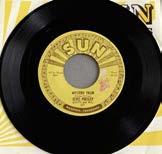
As an impressionable 11-year-old in 1969 in a suburb of New York City, I wondered what Mick Jagger meant when he sang “I met a gin-soaked barroom queen in Memphis.” The Rolling Stones hit single played daily in heavy rotation on WABC-AM.
By 1973, I graduated to WNEW-FM and Mott the Hoople –also British – became my favorite band, whose singer lost his guitar in “All the Way from Memphis,” the lead track off their self-produced album Mott
It was only a matter of time that Making Vinyl would land in this storied music city.
Around this time, I caught up with Bob Dylan’s 1966 album Blonde On Blonde and “Stuck Inside of Mobile with the Memphis Blues Again” stuck in my brain. I thought to my teenaged self, What is this place called Memphis?”
It was only a matter of time that Making Vinyl would land in this storied music city. The budding musicologist in me learned radio hits I loved as kid – Otis Redding’s “Dock of the Bay,” “Booker T & The MGs’ “Green Onions” and Issac Hayes’s “Walk On By” – were all recorded for Stax in Memphis. As a teenager, I knew Elvis Presley also lived locally.
My mother told me her father was an Elvis fan. I visited my grandfather’s gothic-looking house in Brooklyn only once around 1964 when he was already divorced from my grandmother. Among the furnishings were a color television, cameras, and an antique phonograph.
I later found out his record collection included Presley’s earliest Sun singles. When he died in 1969 relatives descended on his prized possessions like vultures. An original 7- inch 45 of Presley’s “Mystery Train” now goes for $741.52 on eBay. If anyone in my family was the rightful inheritor of my grandfather’s records it would be me.
In 1991, my future ex-wife and I called our mini-dachshund “Elvis” because he was nothing but a hound dog. During our last family trip we spent a few hours milling around Graceland. Two decades later, our kids went to college in the south, my son at the University of Mississippi in nearby Oxford, and my daughter at Rhodes College, here in Memphis.
On these college visits, I soaked up music history, visiting Sun Studios, Stax, the Blues Foundation Museum, the record stores Goner and Shangri-la, as well as Memphis Record Pressing, whose co-founder/CEO Brandon Seavers has participated in Making Vinyl since its 2017 debut.
Fast forward to 2025: New year, new challenges for the record manufacturing industry, complicated daily by headlines about international trade wars and tariffs. The good news is that consumer demand for our collective products remains strong, so we obviously are doing something right. But everyone is wondering the impact of federal policy in DC on the global supply chain, raw materials and whether raised prices will hurt our already shrinking profit margins.
We’ve done our best to introduce topics and experts who reflect the times we live in. For example, would you be prepared for a disaster, such as the fires that struck Los Angeles in January? Considering how electronic music files constantly make their way to your facilities, or the rapidly competitive nature of the business, is your customer list and sales record safeguarded from a cyber attack?
Take advantage of all the networking opportunities Making Vinyl presents to meet your next and existing customers, as well as suppliers. Check out all the exhibitors who along with your much appreciated attendance make these events happen.
I can’t wait to hear raconteur Jerry Phillips tell what it was like to grow up around Elvis. His dad Sam Phillips sold Elvis’s recording contract with Sun to RCA in December 1955 and in 1960 opened the larger Sam Phillips Recording Service, which remains a busy studio. You won’t want to miss Jerry’s closing address on June 4 at 12:30 pm.
PLATINUM SPONSOR
TITLE SPONSOR
HOMETOWN SPONSOR
GOLD SPONSORS & PREMIERE MEMBERS



SILVER SPONSORS & SUPPORTING MEMBERS
PACKAGING OLYMPICS SPONSOR
(818)

BRONZE SPONSORS


ADDITIONAL SUPPORTERS



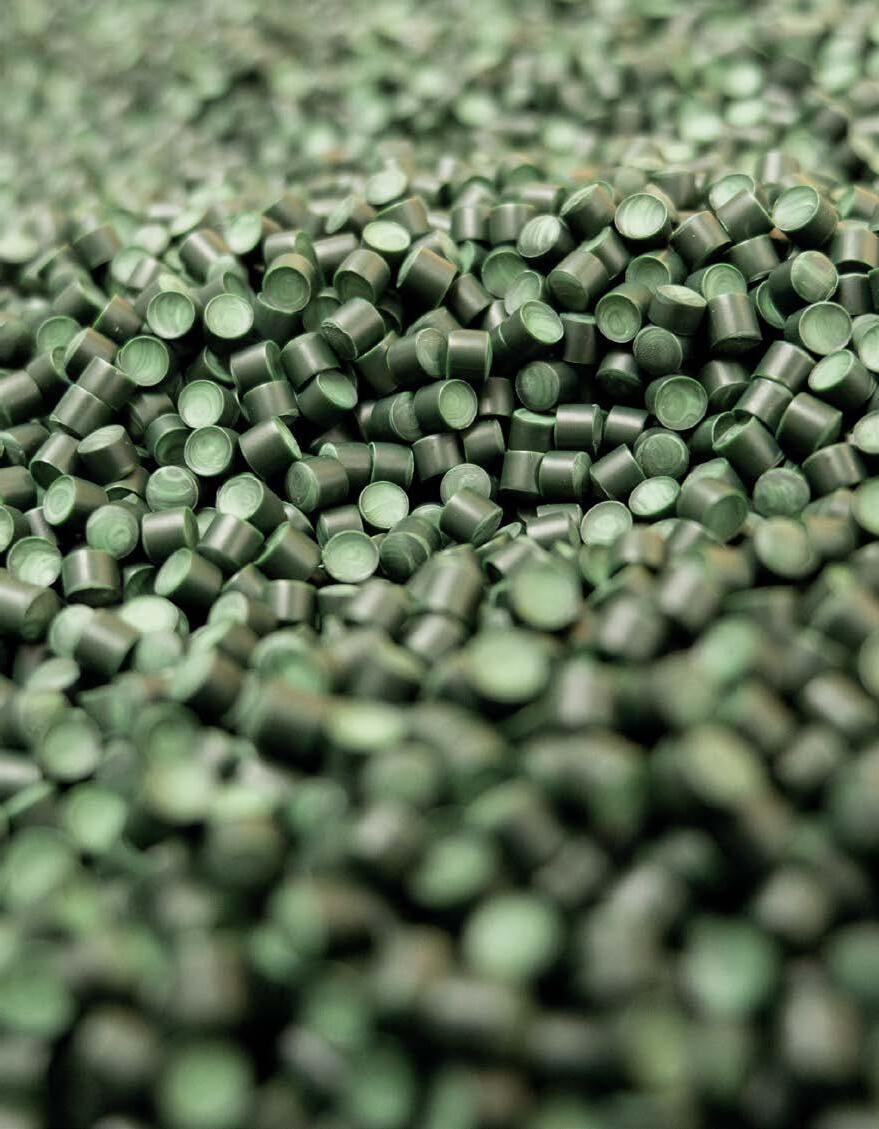




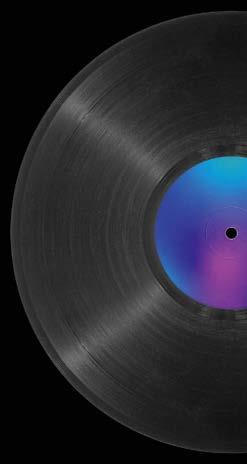
* For speaker bios and full session descriptions, download the Making Vinyl app
Pre-Show: Monday, June 2
1:00 – 3:00 pm
VRMA Member Meeting
Renasant Convention Center
4:00 – 5:00 pm
2nd Annual Packaging Olympics
Renasant Convention Center
9:00 – 9:10 am Welcome & Introductions
Speakers: Cash Carter (Conectiv), Kevin Sulivan (Conectiv) Ballroom C
9:10 – 9:50 am Panel Discussion
Memphis’ Rich Music Scene: Past, Present & Future
Moderator: Robert Gordon (Author/Filmmaker)
Speakers: Pat Mitchell-Worley (Soulsville Foundation), Jeff Powell (Vinyl Masters), Jim Thompson (Eggleston Soundworks), Zac Ives (Goner Fest), Al Kapeezy (Memphis Rap Pioneer) Ballroom C
9:50 – 10:30 am Panel Discussion
Navigating Uncertainty? How U.S. Pressing Plants are Coping
Moderator: Tony Van Veen (Discmakers)
Panelists: Connie Comeau (CopyCats/ADS Group) Ali Miller (Furnace Manufacturing), Brandon Seavers (Memphis Record Pressing), Chad Kassem (QRP/Acoustic Sounds), Mark Michaels (United Record Pressing) Ballroom C
10:30 – 10:35 am Presentation
Compound Supplier Response
Onno-Pieter Sonnega (Plastchem) Ballroom C
10:35 – 11:05 am NETWORKING BREAK
Ballroom A
11:05 – 11:45 am Panel Discussion
Vinyl Innovations Fueled By Small to Medium Pressing Plants
Moderator: Kevin Da Costa (consultant)
Panelists: Dustin Blocker (Hand Drawn Pressing/VRMA), Tom Norwood (LoopFans), Yosef Becher (Hot Wax) Ballroom C
11:50 am – 12:10 pm Panel Discussion
LA Fires Came to 2 Blocks from Our Vinyl Factories
Moderator: Andreas Kohl (Making Vinyl Europe)
Speakers: Alberto Lopez (Belu Music Press), Bryan Hollon (Vinyl Ceremony) Ballroom C
7:00 – 10:00 pm
Meet & Greet
Central Station Hotel (545 South Main, Memphis TN 38103)
12:10 – 12:55 pm Presentation
Are You Prepared for a Disaster? Crisis Plan Tips
Speaker: Ray Seid (Disaster Recovery Institute International) Ballroom C
12:55 – 1:00 pm Video Presentation Ballroom C
1:00 – 2:00 pm LUNCH Ballroom A
2:00 – 2:20 pm Presentation
How Susceptible Are You to A Cyber Attack
Speaker: Dr. Dennis Leber (Leber Consulting LLC) Ballroom C
2:20 – 2:50 pm Panel Discussion
How Record Stores Became Community Centers
Moderator: Prof. Michael Palm (University of North Carolina)
Speakers: Clifton Muhammad & Connie Anderson (Record Track, Chicago), John Miller (Shangri-La Records, Memphis), Eric Friedl (Goner Records, Memphis) Ballroom C
2:50 – 3:05 pm Presentation
Gen Z’s Passion for Vinyl Speaker: Ryan Mitrovic (Vinyl Alliance) Ballroom C
3:05 – 3:20 pm Presentation
By the Numbers: Vinyl Market Update
Speaker: James Duvall (Futuresource) Ballroom C
3:25 – 3:30 pm Presentation
How Vantiva Became Connectiv Speaker: Charles Nelson (Conectiv) Ballroom C
Day One: Tuesday, June 3
3:30 – 4:00 pm NETWORKING BREAK
Ballroom A
4:00 – 4:20 pm Presentation
VRMA’s Anti-Piracy Update
Presenter: Greg Schoener (Copy Cats Record Pressing) Ballroom C
4:20 – 4:35 pm Presentation
Introducing ‘Thermal Beets Records’, Iceland’s First Pressing Plant Since 1982
Speaker: Larry Jaffee (Co-Founder Making Vinyl) Ballroom C
4:35 – 5:00 pm Presentation
Dust & Grooves: Adventures in Record Collecting
Speakers: Larry Jaffee (Co-Founder Making Vinyl), Eilon Paz (Dust & Grooves Editions)
Ballroom C
Day Two: Wednesday, June 4
9:00 – 9:15 am Presentation
How Sustainability Figures in GZ’s Overall Strategy
Speaker: Vladimír Víšek (Head of Sustainability)
Ballroom C
9:15 – 9:30 am Presentation
EvoVinyl Update on the 100% Fossil-Free Alternative Speaker: Marc Carey (CEO, Evolution Music) Ballroom C
9:30 – 10:15 am Panel Discussion
The Latest in Sustainable Packaging
Moderator: Ruben Planting (consultant)
Speakers: Jack Stoughton (Stoughton Printing), Gary Gonzales (Dorado Packaging), Rick Gasparini (Ross-Ellis), Mackenzie Crigger (International Paper) Ballroom C
10:15 – 10:30 am Presentation
New Insights for the Second Report of the VRMA Carbon Footprinting Group
Speaker: Ryan Weitzel (A to Z Media/VRMA) Ballroom C
10:30 – 11:00 am NETWORKING BREAK Ballroom A
11:00 – 11:30 am Presentation
Protecting Vinyl for Artists, Labels & Consumers
Moderator: Eric Paul (Crane Authentication)
Speakers: Heath Laird (Crane Authentication), Greg Schoener (Copy Cats Record Pressing), Gary Gonzales (Dorado Packaging), John Town (Conectiv)
Ballroom C
11:30 am – 12:15 pm Panel Discussion
Cutting, Mastering, & QC Matters
Moderator: Andreas Kohl (Key Production)
Speakers: John Town (Conectiv), Gary Salstrom (Paramount Pressing), Piper Payne (Physical Music Products), Dave Rawlings (Paramount Pressing), Jeff Powell (Vinyl Masters)
Ballroom C
12:15 – 12:50 pm Presentation
Jerry Phillips: From Hanging Out with Elvis as a Kid to Running Sam Phillips Recording Service
Speakers: Robert Gordon (author/filmmaker), Jerry Phillips (Sam Phillips Recordings)
Ballroom C
12:50 – 1:00 pm Ending Session
Closing Remarks
Speaker: Bryan Ekus
Ballroom C












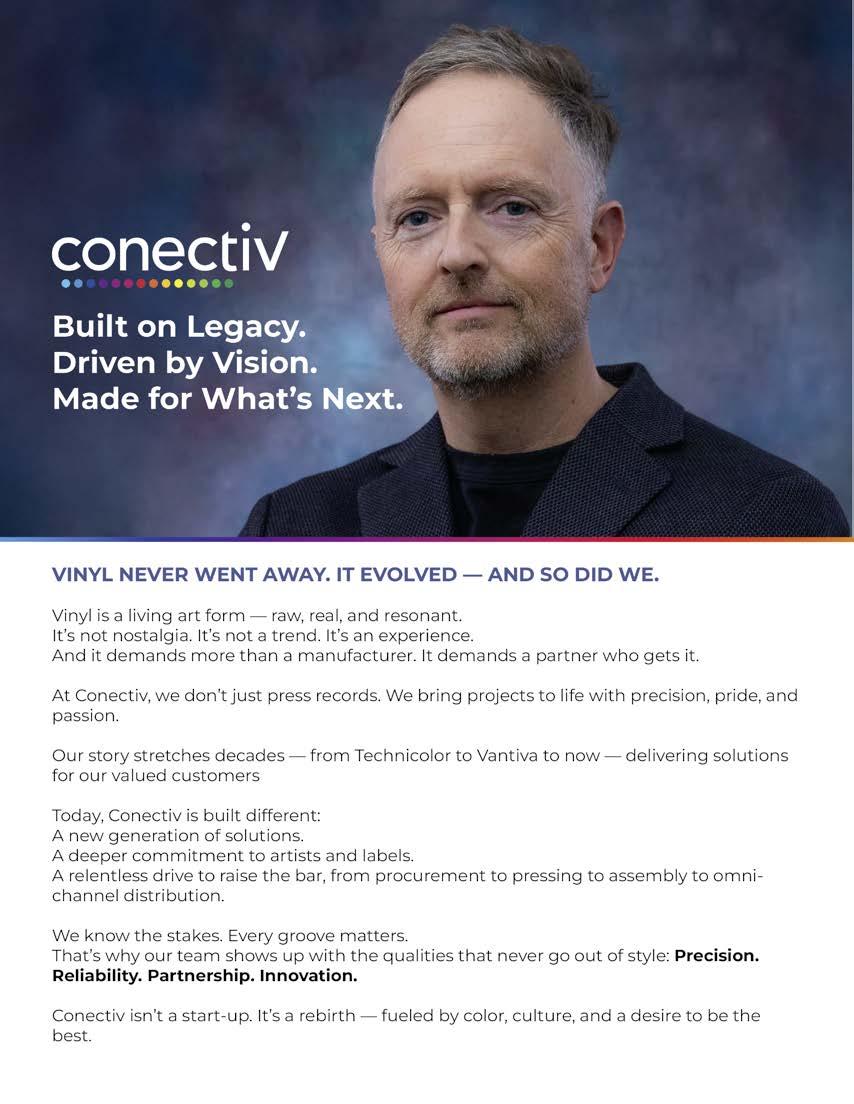

Our stampers make life easier for over 40 independent pressing plants around the world. Could they do the same for you?
We produce them to tighter tolerances than most aerospace applications.
That means test pressings get approved first time – and consistently high audio quality keeps your customers coming back.
Because our stampers last longer, with no unexpected breakages, you get less downtime.
We also know you can’t deliver a great service to your customers unless you are getting it from your stamper supplier. You’ll get a fast response to queries, clear communication, with typical turnarounds measured in days not weeks. (And an immediate response in an emergency.)
With Stamper Discs, you get to spend more time pressing great-sounding records.
Stamper Discs Ltd
85 Burton Street, Sheffield, S6 2HH, United Kingdom
www.stamperdiscs.com
info@stamperdiscs.com
+44 (0) 7751 566311

For more than a decade, Eilon Paz has made it his life’s work to capture globally via photography the relationship between people from all walks of life and cultures and their relationship with vinyl records.
Paz published in October 2024 Dust & Grooves: Further Adventures In Record Collecting. Chronicling vinyl’s consistent surge in popularity, the sequel to his best- selling 2014 first volume digs deeper into why and how these collections were assembled by these music lovers.
Featuring portraits and interviews with 150 more of the world’s most fascinating record collectors, this stunning 650-page hardcover book expertly accentuates a unifying devotion to vinyl.
Dust & Grooves goes beyond the printed book’s with a continuing digital presence and an emailed newsletter, as a team of renown journalists talk to everyone from unknown enthusiasts to DJs, as well as famous musicians, record producers, and music industry executives about what their records mean to them.
For example, D&G recently profiled Mariana Mendes Guarnieri, known as “Mary G” (pictured in the b&w photo), a staple of the Brazilian DJ scene. Born and based in São Paulo, Brazil, Mary explains it took years to break into the mainstream. Now she plays the biggest stages alongside artists who once filled her parents’ modest record collection. At the Coala Festival, she opened for the legendary Gilberto Gil.
Photographer Eilon Paz (right) closes
Day One (June 3) of Making Vinyl at 4:35 pm with an entertaining presentation about his global photographic vinyl journey
Dust & Grooves contributor Christine Polaris writes of Mary G):
“We met for the first time on a very hot afternoon in the city for this “girl’s talk” ... We talked about her experience pursuing music while studying design in college and breaking norms as a woman in Brazil’s male-dominated DJ scene. Spinning at various venues around town, she honed her craft in music selection, drawing inspiration from Brazil’s most passionate DJs. Just over a decade ago, it was rare to see women running the sound booth or taking the spotlight at parties. As Mary puts it, “We don’t need to say amen to what was created by a bunch of men; there are other possibilities.”
Both in print and online, stunning images supported by extensive interviews reveal the motives and back stories behind the global record-collecting community. Tailor-made for lovers of world-class photography, novice to expert collectors, and music obsessives alike, the $95 book is available from Eilon’s website (https://dustandgrooves.com).
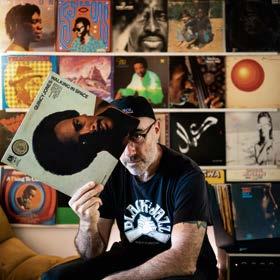
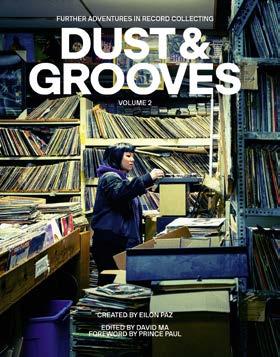
Pheenix is proud to announce the return of manual production, complementing our flagship automatic AD12 system. By reintroducing the manual process, we are now able to o er unique and customized vinyl pressings, including soughtafter formats such as picture discs, splatter patterns, and multicoloured vinyl. This move reflects our commitment in supporting independent artists, boutique labels, and anyone looking to create truly extraordinary vinyl records.
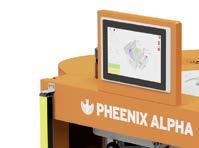
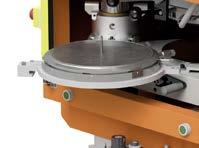
The AD12 Manual also allows customers to expand their setup with two presses serviced by a single extruder, enabling e cient production at a higher scale. Additionally, customers can choose extra extruders for the creation of multi-colored vinyl records, providing more options for creative and artistic projects.

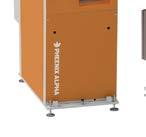

Upgrade your AD12 with Splatter record production capability!
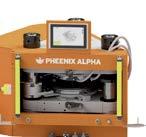
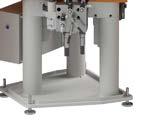
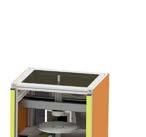

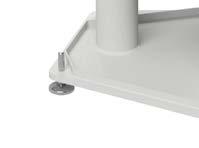



When combined with our compact inline grinder, it creates an excellent solution for sustainability by enabling e cient reuse of flash material directly in the production process. A smart step toward reducing waste and increasing circularity.
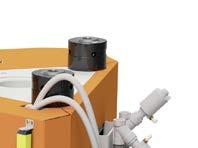
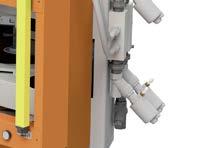







































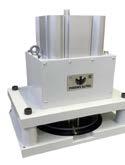
Our powerful grinder e ciently processes several pucks and multiple records at once. Together with our Label Punch that e ciently removes labels, you can streamline your recycling process. Making you a more sustainable producer.

























Pheenix Folder Gluer





Markets most compact folder gluer, formats 7" 10" 12".
Whether you're a newcomer to vinyl record pressing or a seasoned expert, we're here to assist you. We've been delivering fully automatic vinyl pressing machines for decades, many of which are still operating today. Pheenix Alpha AD12 o ers unparalleled reliability, boasting the market's best uptime.
Pheenix Plating Suite – Based on Toolex superior plating technology!





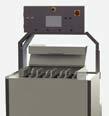





Scalable to suit your productions needs. Complete range of systems for stamper production from lacquer/DMM to family production.

A milestone was reached at Furnace with the launch of the newly commissioned galvanic plant in the USA. After thorough preparations and fine-tuning, the facility is now ready to take stamper production to the next level.
Equipped with Pheenix Alpha’s state-of-the-art technology, the new machine park ensures a more e cient and high-quality production process. It marks a significant investment into the future.
Pheenix Alpha secured a fast and successful startup through close collaboration with Furnace technicians and Sibert’s equipment by Ian Locke, with a strong focus on precision. The very first stamper matched the AD12 Moulds perfectly and increased quality and lifetime on the Stamper.
Customer Comment: Mark Reiter, Executive Vice President | Furnace Record Pressing “The performance of the new galvanic line has exceeded our expectations. From day one, we’ve seen improvements in stamper quality and durability, consistency, and production speed. The installation and accuracy of the Pheenix electroplating equipment reflects their commitment to excellence and deepens the collaborative relationship between Furnace and Pheenix. The new plates are a perfect match for our AD12s as well as our manual presses. This is a game changer for Furnace and our customers.”
By Robert Gordon
“Buster” Williams’s vertically integrated Plastic Products at its peak operated 97 record presses using his own compound; three shifts daily cranked out 225,000 singles headed for jukeboxes nationwide.
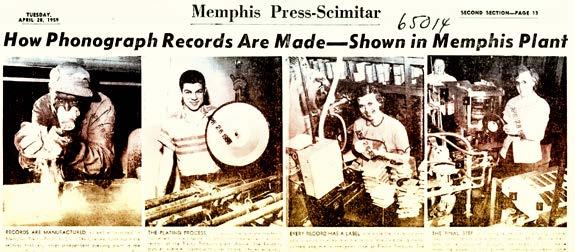
From the Memphis Press-Scimitar, April 28, 1959. Courtesy Special Collections Department, University Libraries, University of Memphis
R. E. “Buster” Williams owned a Memphis record pressing plant, the record distributorship, and the jukebox machines in the beer joints and soda fountains where the records were played. He owned the routes that serviced the jukeboxes and that supplied the records. He was everything except the record company.
In the 1950s, Buster helped Sam Phillips’s Sun Records, Leonard Chess’s Chicago-based Chess Records, and Jim Stewart’s Stax, get started by pressing a thousand records on credit. Buster could gamble the pressing costs on a new company’s song in exchange for a few hundred free copies on his jukeboxes and the promise of payment if the label sold their few hundred.
Taking the chance on an unknown artist was really a pretty safe bet because Buster’s jukebox route operators – the guys
who serviced all the locations – would pay Buster’s distribution company, which would pay Buster’s pressing plant; his inter-company profit mitigated the expense of the pressing, which Buster could potentially collect anyway. His companies were a terrarium for experimentation.
Buster Williams figured out how things worked as a preteen. Born in 1909, his path to record man was set when he bought a drugstore at 17 years old. “There were several slot machines and that’s what got Dad’s interest in coin-operated machines – he saw what kind of profits those things turned,” says his son Robert Williams, who has his own legacy of high-end designs in speakers and turntables.
Round coins propelled round vinyl records into the center of Buster Williams’s world, making him the cog that drove the Memphis regional music industry during the heady days from the 1950s into the 1970s.
Jukeboxes began appearing in the late nineteenth century, rising in popularity during the 1930s, and they came with its own sound effects: the rattle of the coin going in, the click of buttons that select the song, the whirl of the selector riding to the pick, and then the listener’s Pavlovian anticipation triggered by the surface noise as the needle hit the vinyl: Music is about to flow.
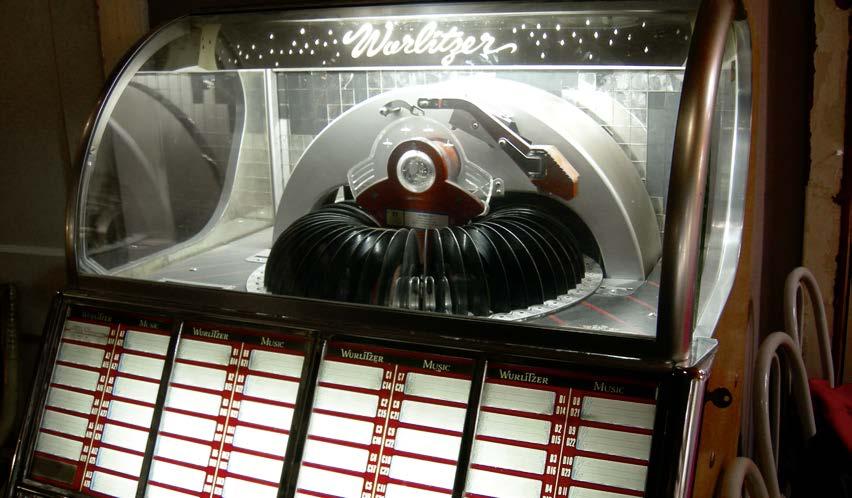
After World War II, Buster made his way to Memphis, where he established the Williams Distributing Company, “primarily a jukebox and pinball machine distributor,” says his son. “He committed to Wurlitzer jukeboxes, and he covered western Tennessee, Mississippi, Louisiana and into the boot-heel of Missouri.”
A 1959 Memphis newspaper article states that Williams Distributing was the nation’s largest jukebox operator, with over 18,000 machines. In addition to owning routes where his employees serviced his jukeboxes, he also sold the machines to others, who competed with his operators to establish their own routes—and who soon came to Buster to buy records. In 1949, Buster opened his own pressing plant Plastic Products. Until then, the major labels controlled the record pressing plants, and the independent labels’ jobs were often bumped to the back of the line.
But at Plastic Products, indies got respect and soon they were coming from all over the nation. Atlantic Records, which would grow into a major label, was one of their leading clients. By 1956, Plastic Products was at capacity, pressing records in three shifts around the clock, using a vinyl compound that Buster created.
To expand, the vertically integration-minded Buster bought a former cheese factory in Mississippi. “We put in a hell of a plant down in Coldwater [Miss.],” says Leon McLemore, who worked closely with Buster. “We had 97 presses at one time down there, and we were shipping 225,000 records a day out of Memphis, three shifts a day ... We’d send a truckload of records into the airport every night.” The records pressed by Plastic Products were shipped all over the country.
Before he died in 1992, Williams amassed considerable wealth. With his kind of money, he could have allied with corporations, forsaking individual ingenuity for broad acquisition. But Buster Williams made his money his way, and he ever embraced the independent spirit, the outsider far from the power centers. He was an entrepreneur doing it for his own capital gain, but that route was also what he believed in, and his work became the musical equivalent of the Mississippi River’s alluvial soil –fertile ground for Memphis, the world’s breadbasket of music.
A longer version of this article appeared in the Winter 2024 issue of Oxford-American (https://oxfordamerican.org/) and is reprinted here with permission from the author. Emmy and Grammy Award winning writer Robert Gordon is the author of 6 books, and producer/director of 8 feature documentaries (therobertgordon.com).
By Lucy Johnson

In a new and shifting landscape of vinyl pressing, buying and collecting records, small to large pressing plants operate in an ever-changing industry. Starting a small-scale pressing plant from scratch, I’ve interacted with customers and other manufacturers. As a musician myself coming from experimental and punk DIY culture, a sentimentality exists behind the principles of such a business in the first place.
Having gone from being a vinyl lover and collector to being a manufacturer, I have seen both sides. It’s been an interesting journey. I can never look at my own collection in the same way again. Operating a pressing plant brings all kinds of quirks, challenges and contradictions.
“Very quickly I learned how the pricing of lacquers, stampers and materials –not to mention the laborious nature of pressing singles – generate a relatively small financial return.”
One of my first big ideas for Vinyl Press was making 7-inch record production accessible again. Such a music culture existed and thrived in the past. Very quickly I learned how the pricing of lacquers, stampers and materials – not to mention the laborious nature of pressing singles – subsequently earn a relatively small financial return. It’s why many pressing plants only concentrate on LPs. Still 7-inch records often are coveted as collectors’ items, thereby driving up their value for a seller on Discogs, but the huge profit never goes back to the pressing plant or even artist.
It’s a bit of a chicken and egg scenario: charging a high price for a new release meant less demand, but not so on the used market. I learned the same amount of energy is required to produce a 7-inch single as a 12-inch LP, and how the whole system functions together: cold water, steam, PVC, the presses themselves. We all aim to ensure to run our places as efficiently as possible.
Also necessary is a nuanced understanding of quality control, which starts with receiving artwork files, working with supplied lacquers and stampers, all before pressing. If the machinery is operating properly, the records we produce should in theory have few faults. Then the run makes it to the “QC department.” (In our case, it was usually the same person who pressed them, sitting in a different space.) Any issues not flagged previously, then comes down to personal interpretation, as guided by industry standards for tolerance.
Small plants know their end users or customers, who might have different “standards,” depending on genre. For example, a dance record will be dragged around in a disco bag in a crate, flung on a turntable vibrating because of the sheer volume of music played in clubs and then to be old news a few weeks later.That same dance 12-inch doesn’t have the same usage as a classic jazz LP, which will be listened to with great intent and stored very carefully for years to come.
I’m not suggesting one record has more value than another. A club DJ prompting gyrating bodies on a dance floor is as important as an audiophile relishing every moment of a Blue Note classic at home.
At the end of the day, any pressing plant must generate enough income to justify its existence. It’s important to remember that this industry exists because of the culture it serves. Of course, cultures change. Despite near extinction nearly 20 years ago, vinyl gems still were found in record shops that refused to disappear, at flea markets and record fairs. We all add value to the ecosystem.
Maybe 7” singles aren’t what they once were during their 1960s heyday when teenage bedrooms often sported a portable record player more often than not. A decade ago, the American phonograph company Crosley and retailer Urban Outfitters were credited with driving the vinyl comeback by appealing to fashionista-minded millennials and Gen Z.
Hopefully someone can figure out how to make 45-rpm economics work for a small pressing plant. There’s a new generation of consumers awaiting.
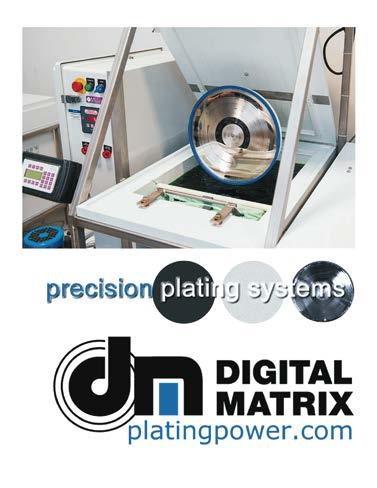
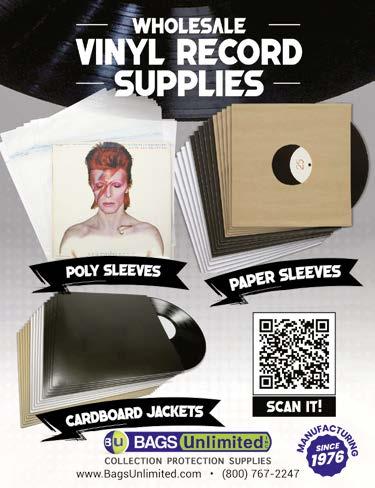



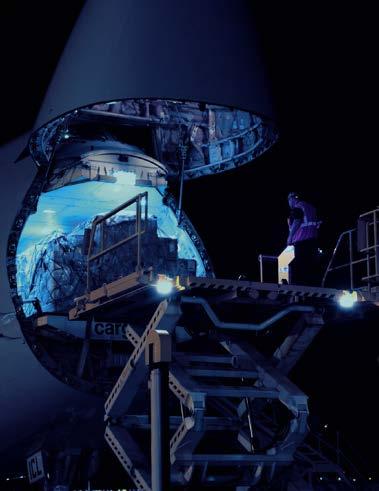





By Philip Burrows, Managing Director, Sound Effects
Now I’ve got your attention, let me clarify what I mean by that statement, because clearly, Music Catalog is not bollocks. In fact, far from it, with almost all record companies now deriving upwards of 75% of their total annual revenue from Catalog it’s arguably, everything. Just think how that has flipped a long-held paradigm in the industry.
So, what exactly is bollocks about Catalog then? Well, the issue is the word and the way that Catalog has been viewed within the traditional record company structure. But for today, let’s just address that word, or to be more accurate, that “label.”
Absolutely no one in the REAL WORLD (in caps, because lest we forget, in the music business we don’t work in the real world), uses the term, or thinks of music as Catalog or Frontline. “Hang on, hang on,” I hear you shout; “but some do use the term ‘new music’!”
Yes, I can’t deny that, but they’re not always using that term to describe what you are talking about, dear music biz professional. Sometimes they’re “consciously” referring to
something else and more often “subconsciously” labelling something completely different as ‘new’.”
I first want to take you back dear reader, to past work the team has done with legends like Zeppelin, Floyd, Bowie, Prince, et. al. Despite a few nuanced project objectives for each artist project, they usually boiled down to two requests:
1. Where are the original fans and what are their attitudes, behaviors and values today?
2. Can we contemporize the artists for a new audience?
As a quick aside, I’ll also point out that the answer to b) is almost always, YES and we’ve successfully identified multiple ways of doing just that. But hey, if you want to know more about that, you’ll need to come behind the ‘pay-wall’ as they say. Just email us.
The insight that we discovered working with many artists like these is that new audiences, (meaning those newly discovering the artists music), will consider these “Catalog”
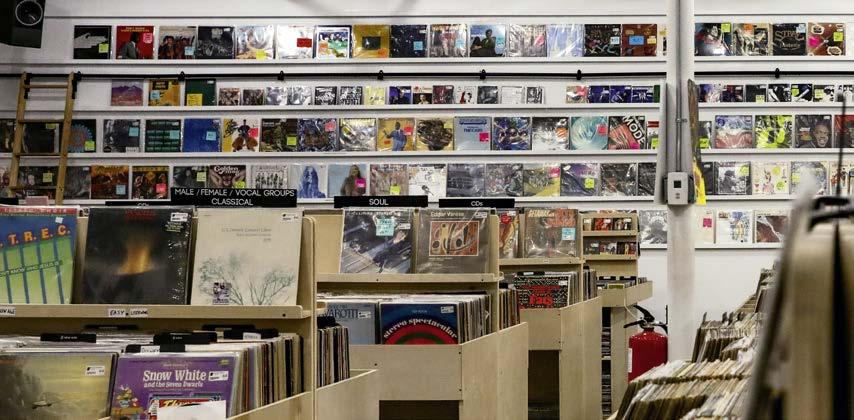
artists as “new music” at the point that they discover them. Consciously labelling or subconsciously perceiving the “catalog” music as ... you guessed it ... “new music.” And this is always the way with younger audiences, those that weren’t there at the time. A 14-year-old discovering The Pixies’ “Monkey Gone To Heaven” or The Kinks’ “Waterloo Sunset” for the first time, consider those tracks “new music,” that’s contemporary and relevant to their life at that point of discovery, in that very moment.
“A 14-year-old discovering ‘Monkey Gone to Heaven’ or ‘Waterloo Sunset’ for the first time – they’re contemporary and relevant at point of discovery.”
That’s great news, as it should open up fantastic opportunities for these established artists. Yes, but no amount of transactional (WHAT) data or any “silver bullet” app is going to be able to explain the parameters of that contemporization. Don’t get me wrong, there are some fantastic moves already being made, some that I’m proud to say we’ve been involved in, but there’s still so much more opportunity which just isn’t being realized.
Historically Catalog wasn’t sexy enough for senior management. The extraordinarily knowledgeable and talented people that tended, protected and developed these treasures were
pushed to the darker recesses of the building, and frankly not supported. Ironically, now Catalog’s “keeping the lights on,” these talented people in Catalog (those that are left) are being asked to deliver more ... but with less. Arguably, there’s more opportunity within the eco-system for Catalog artists, than Frontline. However, to realize those opportunities to their fullest means going beyond the traditional record company cycle of reissues, a boxset here, a synch there and requires:
• A collection of additive skills, knowledge, contacts not customary to a record company
• Time and long-term strategy
• Sway beyond recorded rights
• Holistic, connected activation
Of course, before all that, one needs that thorough understanding of that contemporized relevance we talked about. A relevance wedded in a unique mixture of beliefs, emotions and behavior. That’s never going to be explained by the torrent of WHAT data music companies are drowning in, or some “silver bullet” app. That can only come from WHY data.
The preceding was reprinted with permission from the author, whose London, UK- based consulting firm Sound Effects can be reached via wearesoundeffects.com.
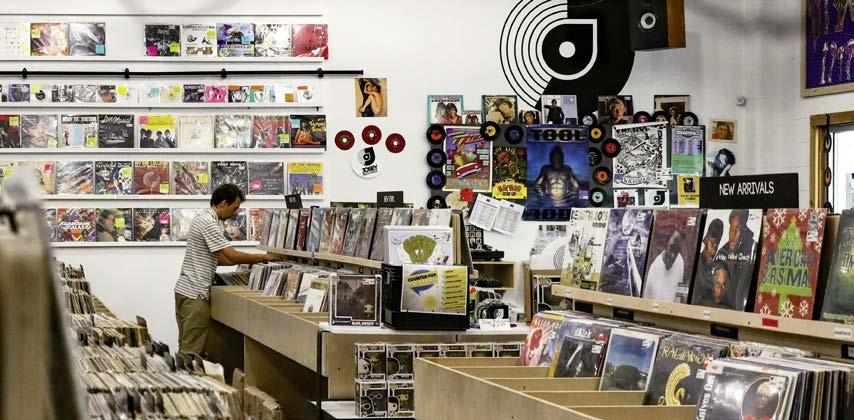
By Larry Jaffee, Co-Founder, Making Vinyl & Thermal Beets Records
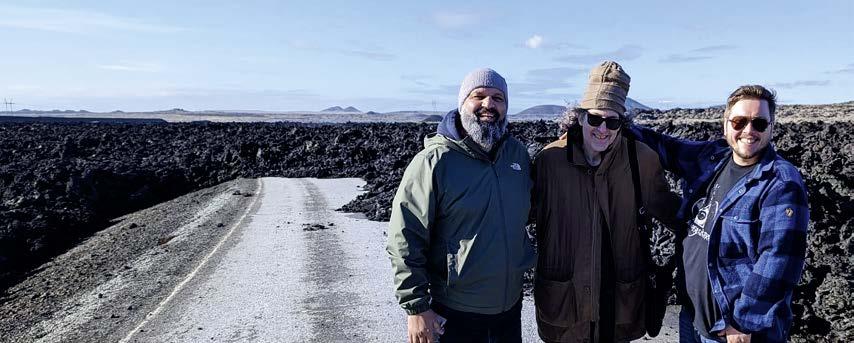
Maybe it’s purely osmosis, given that I’ve been steeped in chronicling the rebirth of vinyl manufacturing since 2016 as a journalist and then as co-founder of Making Vinyl a year later. Two years ago I began seriously thinking about jumping into the manufacturing game myself. The project hatched at several editions of Making Vinyl.
This journey began in May 2019 in Berlin, where I first learned of the toxicity of PVC, which was hammered home by The Guardian newspaper headline covering the event: “Vinyl revival: is there an environmental cost to record sales?” Until then, I didn’t know the European Union had banned additives such as lead that stabilizes a vinyl record.
A pandemic later, we reconvened in September 2022 in Offenbach, Germany, when sustainability was a major topic of discussion. I perked up when Marc Carey discussed how his UK company Evolution Music developed a plant-based PVC alternative made from sugar beets. A seed was literally planted in my brain. (Marc is speaking here on Day 2.)
Flying back to the States via Amsterdam, I switched planes in Iceland. I was knocked out by Icelandair’s in-flight entertainment: 200 Icelandic artists – who I never heard of with the exceptions of Björk, her previous band The Sugarcubes, and Sigur Rós. I said to myself, “If any place needs a record factory, it may be Iceland.” I made a mental note to get back to this island.
In June 2023 at Making Vinyl in Minneapolis, I was about to moderate a panel about the international pressing scene when I glanced at the bio of one of my panelists, Gudmundur Ørn Isfeld, a co-owner of RPM Records in Copenhagen, Denmark. He moved there for college in 2008 to learn graphic design. “Gummi” was born and grew up in Iceland. I asked him if he ever thought of building a factory in Iceland. He replied, “I already make a third of the records sold there. Yeah, I think about it.”
As it turned out, RPM pressed the soundtrack score of I Am Greta, the documentary about teenage climate change activist Greta Thunberg. I purchased the record the year before
in London, not knowing about the RPM connection. Made from recycled vinyl, the album’s packaging used environmentally friendly paper and inks.
In September 2023 at Making Vinyl in Haarlem, Netherlands, I cornered featured speaker Kevin Da Costa, the UK-based vinyl pressing consultant who helped to build 24 factories around the world, including RPM, to ask him about Iceland.
“You’re not going to believe this, but on my way to Minneapolis a few months ago for Making Vinyl, I took a 24-hour layover in Reykjavik. I went to the record shops and clubs. I have the same idea as you!” Kevin added he recently became Evolution’s technical director.
“We need to figure this out for Iceland,” I implored to Kevin, and an in email to Gummi. A few weeks later, the three of us had our first Zoom meeting, which turned out to be a regular thing every week or two for the next year.
During the first call, Kevin pointed out that we can claim to be the world’s only “geothermal-powered record factory.” Electricity is a major fixed cost for any pressing plant and promises to be minimal in Iceland because of its geothermal energy that’s recently woken the regularly erupting volcano.
The three of us in March 2024 took a fact-finding mission to Iceland and received buy-ins from key Icelandic music industry leaders and government officials, providing the confidence we needed to pursue the business. Two months later, we joined forces with a fourth founding partner, an Icelandic engineer/punk rock musician, who was looking into building his own vinyl factory.
In November 2024, Thermal Beets Records debuted at the Iceland Airwaves conference in Reykjavik, distributing 400 copies of a promotional record made of EvoVinyl featuring nine local artists who performed at its 25th festival.
We’re only getting started. Stay tuned.









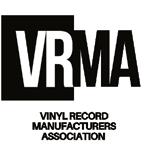

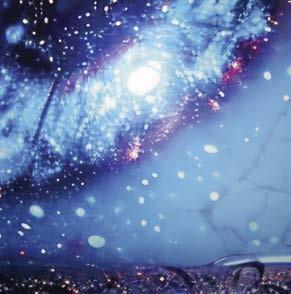

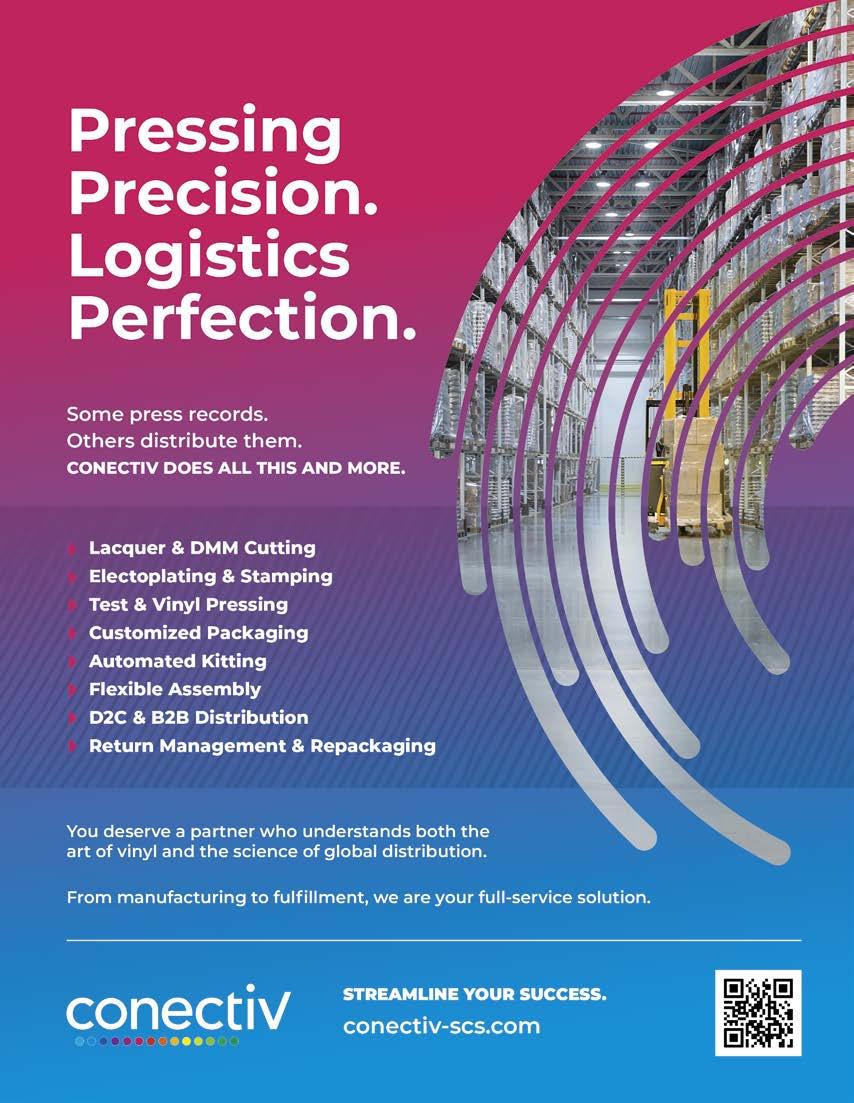




By Ruben Planting, Making Vinyl Europe

Since early April, turbulence sums up trying to be proactive while operating a business or merely following the news. The financial markets fluctuate daily down and up, depending on whether international tariffs are being threatened or actually levied.
U.S. government-imposed tariffs will exacerbate a relatively small, already challenged industry dependent on international trade.
Factories, consumers, labels, artists and a whole supply chain all find themselves mired in cultural, economic and mental turmoil. Meanwhile, two ongoing wars directly affect Europe. The only certain thing is more uncertainty.
U.S. government-imposed tariffs will exacerbate a relatively small, already challenged industry dependent on international trade.
It wasn’t long ago that we were still talking about the impact of COVID, which ultimately turned out good for vinyl. Orders were plentiful. Existing plants on both sides of the Atlantic dramatically increased capacity to keep up with demand, while new boutique facilities with one to three presses jumped on the bandwagon. Meanwhile, retail prices hiked upward as more record players were sold globally. PostCOVID, production slowed down in a market that grew too quickly, forcing factories to place more emphasis on serving local regions.
Anecdotally, we’ve heard stories from various European manufacturers that wholesale prices are coming down. A few small plants have already ceased operations for a variety of reasons. The industry clearly isn’t the same as when these startups entered the business.
To remain competitive, you can drop prices only so much. At some point, mounting overhead costs will push any struggling company to wonder when it’s time to give up. What’s the best way to prevent this from happening? Focus on unique aspects of the product, deliver quality service, and find new markets.
American-made finished goods exports may be exempt due to federal code (https://www.law.cornell.edu/uscode/ text/50/1702).
More expensive raw materials imported from abroad could trigger higher costs all around, further chipping away at already evaporating profit margins. If permanent deals are not reached, consumables along the supply chain likely to be impacted by such tariffs include PVC, packaging materials, printed materials and machinery parts.
Ironically, one of the biggest harbors in the world, Rotterdam in the Netherlands, has recently been purchased by MSC/ Blackrock. The gateway was previously owned by Chinese investment groups.
Factories will need to work closer with their label customers to figure out solutions together regarding production, supply chain and warehousing needs, depending on the region.
At the time of this writing in mid-April, previously announced tariffs on hold were to expire in July. The suspense continues.
An economic recession will have a ripple effect. Consumers will buy less if retail prices increase. Here’s to a more stable era notwithstanding geopolitical machinations beyond our control.

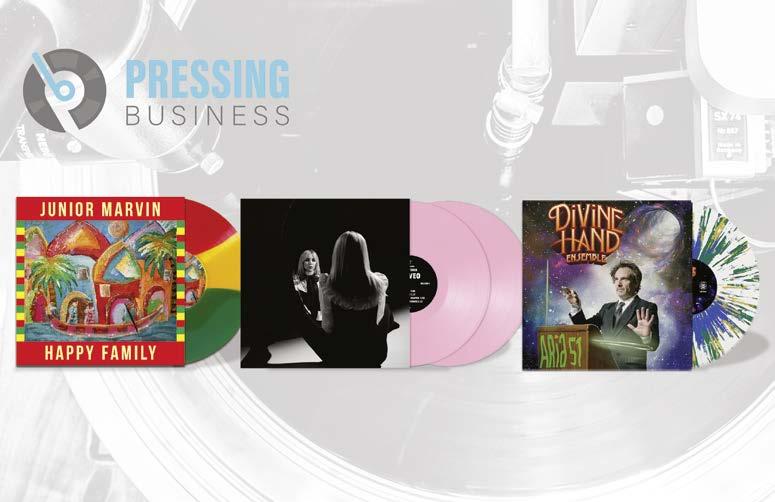



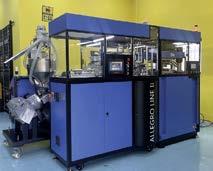
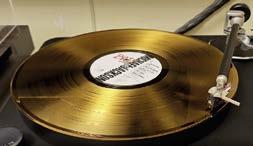




By Andreas Kohl, Making Vinyl Europe
Since the inaugural Making Vinyl Europe event in 2019 at the historic Hansa Studios in Berlin, our conference has attracted a diverse range of attendees from the manufacturing sector and beyond, encompassing all facets of vinyl appreciation. Following our second event in 2022 in Offenbach, Germany (outside Frankfurt), we established our presence in the picturesque city of Haarlem the past two years.
Sept. 24-26, 2025 Holland conference will cover all business aspects to ensure vinyl’s future
Located within Greater Amsterdam, Making Vinyl Europe will return to Haarlem from September 24 to 26, 2025. Coinciding with the Haarlem Vinyl Festival, MVE’s objective is to integrate all aspects of cultural expression linked to and inspired by vinyl, with a particular focus on the future of the format.
For the second consecutive year, Day 3 of the conference will be devoted to sustainability. This day aims to delve into sustainable manufacturing practices, energy consumption, and material discussions. By welcoming operations and NGOs indirectly connected with our industry, we anticipate presentations on mechanical and chemical methods for reusing and recycling materials. Drawing insights from other industries and cultural approaches within the entertainment sector can yield solutions and answers. We aim to broaden our perspectives, engage in out-of-the-box discussions, and learn how industry partners tackle these challenges.
In response to years of dialogue and analysis, several working groups have emerged to measure the environmental impact
Bryan Ekus President Making Vinyl
Alexander Jones Design & Branding
Larry Jaffee Conference Director Making Vinyl Memphis
Andreas Kohl Conference Director Making Vinyl Europe
Ruben Planting Assistant Program Manager
Malissa Sole Social Media & PR
Chuck Ono Sales & Partnerships – APAC
of vinyl record manufacturing. From carbon emissions to waste management, energy consumption, and complete life-cycle analyses, our industry is committed to providing substantiated measurements and claims that consumers rightfully expect. We will explore collaboration and the formation of powerful alliances to achieve these goals.
To facilitate these objectives, we will introduce new discussion formats beyond traditional panels and presentations. Workshops all three days will enable smaller group discourse, aiming for communicable results not only focused on sustainability but also on mastering and cutting, brand awareness, and quality assurance.
Panel discussions on the first day will further last year’s conversations, involving artists and labels to provide insights into the future drivers of vinyl record production and consumption. Topics will include design, music promotion, and brand building. Additionally, we will examine new distribution channels, the advantages of D2C concepts, pressing plants managing their own labels, and strategies for branding special efforts.
The first day will feature the return of the B2B Matchmaking Session introduced in 2024 with a new twist. Attendees will have the opportunity to engage with various stages of the record-making process and associated businesses. This guided “meet the industry” event will offer more in-depth discussions and information exchanges than a typical panel, fostering a relaxed atmosphere for attendees to share content and network effectively. As always, Making Vinyl Europe 2025 will provide ample opportunities for networking.
We hope to see you there! Contact andreas@makingvinyl.com to see how you can get involved!
Andrej Krause, Bernhard Krause, Vivien Gollnick, Christiane Lenk, Michaela Schäfer
SPECIAL THANKS TO
Eric Shapiro
Rosemary Shapiro
Mylo Ekus
